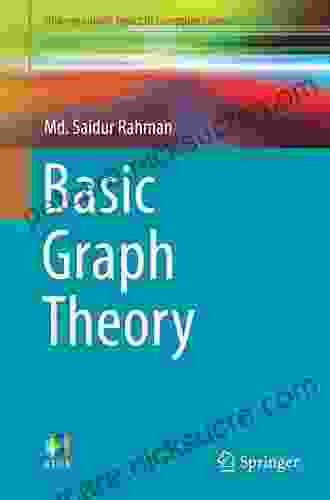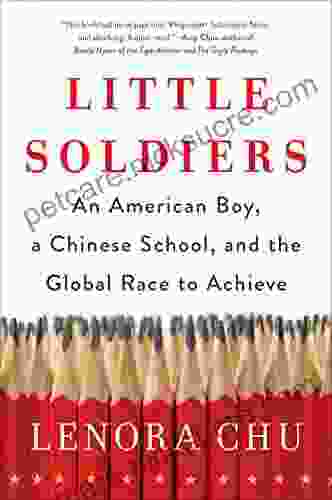Delving into the Fundamentals of Graph Theory: Core Concepts for Computer Science Undergraduates

Graph theory, a cornerstone of mathematics, finds ubiquitous applications in diverse fields, including computer science. For computer science undergraduates, mastering graph theory is indispensable to comprehending the intricate workings of networks, algorithms, and data structures. This comprehensive article unveils the fundamental concepts of graph theory, empowering you to navigate this fascinating subject with confidence. Dive in and explore the captivating world of graphs!
Understanding Graphs: The Basics
A graph, denoted by G, comprises two fundamental components:
5 out of 5
| Language | : | English |
| File size | : | 6766 KB |
| Text-to-Speech | : | Enabled |
| Screen Reader | : | Supported |
| Enhanced typesetting | : | Enabled |
| Print length | : | 179 pages |
- Vertices: Represented by V(G),vertices are the fundamental building blocks of a graph, analogous to points on a map.
- Edges: Denoted by E(G),edges connect vertices, representing relationships or connections between them.
Graphs can be classified into two primary types:
- Directed graphs: In directed graphs, edges possess a specific direction, indicated by arrows. These graphs model one-way relationships or flows.
- Undirected graphs: Undirected graphs lack edge direction, indicating bidirectional connections or relationships between vertices.
Essential Graph Properties
Equipped with the basics, let's delve into the key properties that characterize graphs:
- Order: The order of a graph, |V(G)|, signifies the total number of vertices it possesses.
- Size: The size of a graph, |E(G)|, represents the total number of edges connecting its vertices.
- Degree: The degree of a vertex, denoted deg(v),signifies the number of edges incident to it. For directed graphs, the in-degree and out-degree of a vertex are considered separately.
- Path: A path is an ordered sequence of vertices connected by edges. Its length corresponds to the number of edges traversed.
- Cycle: A cycle is a path that begins and ends at the same vertex, forming a closed loop.
- Connectivity: A graph is connected if there exists a path between every pair of vertices. Otherwise, it is disconnected.
- Subgraph: A subgraph H is a subset of a graph G, containing a subset of its vertices and edges.
- Complete graph: A complete graph is one in which every vertex is connected to every other vertex.
- Tree: A tree is an acyclic connected graph, containing no cycles.
Graph Representations: Visualizing Connections
Visualizing graphs is crucial for understanding their structure and properties. Two prominent representation methods are:
- Adjacency matrix: An adjacency matrix is a two-dimensional square matrix, where the rows and columns correspond to vertices. Non-zero entries indicate the presence of edges.
- Adjacency list: An adjacency list is a data structure that maintains a list of vertices adjacent to each vertex.
Graph Algorithms: Unlocking Computational Power
Graph theory boasts a rich arsenal of algorithms that empower us to solve complex problems efficiently. Here are some fundamental algorithms:
- Breadth-first search: BFS systematically explores a graph level by level, discovering all vertices reachable from the starting point.
- Depth-first search: DFS traverses a graph recursively, exploring branches in depth before backtracking.
- Dijkstra's algorithm: This algorithm finds the shortest path from a source vertex to all other vertices in a weighted graph.
- Kruskal's algorithm: Kruskal's algorithm constructs a minimum spanning tree for a weighted graph, connecting all vertices with the least total weight.
- Prim's algorithm: Similar to Kruskal's algorithm, Prim's algorithm also finds a minimum spanning tree, but it operates incrementally, adding edges to a growing tree.
- Floyd-Warshall algorithm: This algorithm computes all-pairs shortest paths in a weighted graph.
Applications of Graph Theory in Computer Science
The applications of graph theory permeate the vast landscape of computer science:
- Data structures: Graphs serve as fundamental data structures for representing complex relationships, such as trees, queues, and adjacency lists.
- Networks: Graph theory is pivotal in modeling and analyzing networks, such as social networks, computer networks, and transportation networks.
- Algorithms: Graph algorithms are instrumental in solving optimization problems, such as finding shortest paths, minimum spanning trees, and network flows.
- Artificial intelligence: Graph theory underpins various AI techniques, including knowledge representation, machine learning, and natural language processing.
- Database management: Graphs enable efficient representation and querying of complex data relationships in database systems.
- Computational geometry: Graph theory finds applications in computational geometry for tasks like triangulation, convex hull computation, and visibility determination.
Graph theory, with its rich conceptual framework and versatile applications, stands as a cornerstone of computer science education. Understanding the core concepts and properties of graphs empowers computer science undergraduates to tackle complex problems, design efficient algorithms, and comprehend the intricate workings of networks and data structures. Embark on this captivating journey into the realm of graphs, unlocking the gateway to a world of computational possibilities!
5 out of 5
| Language | : | English |
| File size | : | 6766 KB |
| Text-to-Speech | : | Enabled |
| Screen Reader | : | Supported |
| Enhanced typesetting | : | Enabled |
| Print length | : | 179 pages |
Do you want to contribute by writing guest posts on this blog?
Please contact us and send us a resume of previous articles that you have written.
 Fiction
Fiction Non Fiction
Non Fiction Romance
Romance Mystery
Mystery Thriller
Thriller SciFi
SciFi Fantasy
Fantasy Horror
Horror Biography
Biography Selfhelp
Selfhelp Business
Business History
History Classics
Classics Poetry
Poetry Childrens
Childrens Young Adult
Young Adult Educational
Educational Cooking
Cooking Travel
Travel Lifestyle
Lifestyle Spirituality
Spirituality Health
Health Fitness
Fitness Technology
Technology Science
Science Arts
Arts Crafts
Crafts DIY
DIY Gardening
Gardening Petcare
Petcare Lindsey Bliss
Lindsey Bliss Stephen Bodio
Stephen Bodio Sharon Wilkins
Sharon Wilkins Lei Wang
Lei Wang Bradmd
Bradmd Michael T Mcdermott
Michael T Mcdermott Brad Myers
Brad Myers Sean Fitz Gerald
Sean Fitz Gerald Daisaku Ikeda
Daisaku Ikeda Florence Nightingale
Florence Nightingale Sandra Uwiringiyimana
Sandra Uwiringiyimana Sanjay Sarma
Sanjay Sarma Daniel L Schacter
Daniel L Schacter Naomi Moriyama
Naomi Moriyama Hafsah Faizal
Hafsah Faizal Tim Powers
Tim Powers Darril Fosty
Darril Fosty Robert Oerter
Robert Oerter Samantha Boardman
Samantha Boardman Geoff Johns
Geoff Johns Lou Nanne
Lou Nanne Carol Lynn Mckibben
Carol Lynn Mckibben Joshua G Shifrin
Joshua G Shifrin David Wolff
David Wolff Elaine Heney
Elaine Heney Claire Dunn
Claire Dunn Roger Frampton
Roger Frampton Carola Hein
Carola Hein Taylor Fontenot
Taylor Fontenot Adam Cesare
Adam Cesare Michael Ross
Michael Ross Anthony Burgess
Anthony Burgess Rebecca Solnit
Rebecca Solnit Steve Crawford
Steve Crawford Dierdre Wolownick Honnold
Dierdre Wolownick Honnold Ukay J Ekong
Ukay J Ekong Pam Jarvis
Pam Jarvis Mambo Chita Tann
Mambo Chita Tann Robyn Perry Worthington
Robyn Perry Worthington Geoff Powter
Geoff Powter Rollo Tomassi
Rollo Tomassi Amanda Claridge
Amanda Claridge Gary E Schwartz
Gary E Schwartz Irene Spencer
Irene Spencer Gary M Schultheis
Gary M Schultheis Six Sisters Stuff
Six Sisters Stuff Kajal Gupta
Kajal Gupta David Roberts
David Roberts Anthony Haynes
Anthony Haynes Alan Agresti
Alan Agresti Raichelle Carter
Raichelle Carter Rosemary Ellen Guiley
Rosemary Ellen Guiley Saroo Brierley
Saroo Brierley Scott Matthews
Scott Matthews Otto Toeplitz
Otto Toeplitz Lynne Tolley
Lynne Tolley Ejike Ifeanyichukwu
Ejike Ifeanyichukwu Jane Yeadon
Jane Yeadon Peter Hessler
Peter Hessler Kathy Farrokhzad
Kathy Farrokhzad Denis Dwyer
Denis Dwyer Launi Meili
Launi Meili David I Spivak
David I Spivak Laura Luther
Laura Luther Marisa Kanter
Marisa Kanter Megan Sloan
Megan Sloan Sarah A Clark
Sarah A Clark Bilingual Edition Kindle Edition
Bilingual Edition Kindle Edition James M Tabor
James M Tabor Doug Degrood
Doug Degrood Burt L Standish
Burt L Standish Kim Dwinell
Kim Dwinell Rachael Bell Irving
Rachael Bell Irving Joseph Mercola
Joseph Mercola Rebekah Dodson
Rebekah Dodson Jonathan Tarbox
Jonathan Tarbox Robert Irwin
Robert Irwin Shane Jones
Shane Jones Arny Alberts
Arny Alberts Elizabeth Becker
Elizabeth Becker Kyler Shumway
Kyler Shumway Franz Boas
Franz Boas Jean Pierre De Caussade
Jean Pierre De Caussade Tyler Lansford
Tyler Lansford Ann Olga Koloski Ostrow
Ann Olga Koloski Ostrow Jay Cassell
Jay Cassell 1st Ed 2019 Edition Kindle Edition
1st Ed 2019 Edition Kindle Edition Lani Forbes
Lani Forbes Andrew Solomon
Andrew Solomon Christopher Hook
Christopher Hook Chris J Ellis
Chris J Ellis Rafael Nadal
Rafael Nadal David Faulkner
David Faulkner Nicholas J Saunders
Nicholas J Saunders Christian Fader
Christian Fader Nick Redfern
Nick Redfern Daniel H Pink
Daniel H Pink Tim Deroche
Tim Deroche Traci Chee
Traci Chee Paul Gaskell
Paul Gaskell Peter Burns
Peter Burns Manjit Kumar
Manjit Kumar Travis Senzaki
Travis Senzaki James Ragonnet
James Ragonnet Janet Malcolm
Janet Malcolm Charles Fleming
Charles Fleming Morten H Christiansen
Morten H Christiansen Mildred Council
Mildred Council Harry Fisch
Harry Fisch Piotr Naskrecki
Piotr Naskrecki Wolfgang Jank
Wolfgang Jank Jamil Zaki
Jamil Zaki 1st Ed 2021 Edition Kindle Edition
1st Ed 2021 Edition Kindle Edition Fletcher Dunn
Fletcher Dunn Didier Reiss
Didier Reiss Leona S Aiken
Leona S Aiken Jeffrey S Saltz
Jeffrey S Saltz Laura Prepon
Laura Prepon Joshua James
Joshua James Robert Clifton Robinson
Robert Clifton Robinson Christa Mackinnon
Christa Mackinnon Suzy Hopkins
Suzy Hopkins Carmen Acevedo Butcher
Carmen Acevedo Butcher Leonard Sax
Leonard Sax Peter Heller
Peter Heller Wendy Higgins
Wendy Higgins Nancy Hendrickson
Nancy Hendrickson Michael Borenstein
Michael Borenstein Kathleen Buckstaff
Kathleen Buckstaff Emily Vikre
Emily Vikre Deborah T Goldberg
Deborah T Goldberg Elizabeth Heavey
Elizabeth Heavey Brent E Turvey
Brent E Turvey My Daily German
My Daily German Larry Kaniut
Larry Kaniut Ron Larson
Ron Larson S K Gupta
S K Gupta Mike Bender
Mike Bender Mark Vee John
Mark Vee John Leslie Anthony
Leslie Anthony Perre Coleman Magness
Perre Coleman Magness Dr Mike Grevlos
Dr Mike Grevlos Derek Rowntree
Derek Rowntree Ian Stewart
Ian Stewart Elizabeth Field
Elizabeth Field Amanda Brooks
Amanda Brooks Lh Press
Lh Press Ivor Horton
Ivor Horton William E Glassley
William E Glassley Pam Vredevelt
Pam Vredevelt Joachim Rossberg
Joachim Rossberg Janice K Ledford
Janice K Ledford Jeremy Lent
Jeremy Lent Ellie Marney
Ellie Marney Robyn Ryle
Robyn Ryle Clark A Campbell
Clark A Campbell Ashley Stanford
Ashley Stanford Bruce Brown
Bruce Brown Jandy Nelson
Jandy Nelson Gerd Gigerenzer
Gerd Gigerenzer Christine E Sleeter
Christine E Sleeter Jason Sumner
Jason Sumner Karina Manta
Karina Manta Leonie Mack
Leonie Mack Jesse M Ehrenfeld
Jesse M Ehrenfeld Jay Carter
Jay Carter Mara Rutherford
Mara Rutherford Gerald Beaudry
Gerald Beaudry Robin Hobb
Robin Hobb George Grimm
George Grimm Nick Morrison
Nick Morrison Webb Chiles
Webb Chiles Philip Coppens
Philip Coppens Nicole Zasowski
Nicole Zasowski Diane H Tracey
Diane H Tracey Kaoru Sinozaki
Kaoru Sinozaki Jamie Whyte
Jamie Whyte Karen L Cox
Karen L Cox Monica Beyer
Monica Beyer Brian Meier
Brian Meier Chad Waterbury
Chad Waterbury 6th Edition Kindle Edition
6th Edition Kindle Edition Vikas Bhushan
Vikas Bhushan Heather A Smith
Heather A Smith Valerie Nash Chang
Valerie Nash Chang Philip Moore
Philip Moore Rachel Reed
Rachel Reed Knowledge Tree
Knowledge Tree Tillie Cole
Tillie Cole Editions La Plume D Eros
Editions La Plume D Eros Philippa Langley
Philippa Langley Dk Publishing
Dk Publishing Richard E Nisbett
Richard E Nisbett Christian Straube
Christian Straube Botros Rizk
Botros Rizk Seth Tucker
Seth Tucker Shalini Shankar
Shalini Shankar Gail Buckland
Gail Buckland Stanley Vast
Stanley Vast Wabun Wind
Wabun Wind Geraint Thomas
Geraint Thomas Craig Clapper
Craig Clapper Paul Johnson
Paul Johnson Berkshire K Greene
Berkshire K Greene Tadahiko Mizuno
Tadahiko Mizuno Russ Moorhouse
Russ Moorhouse Susan Ludington Hoe
Susan Ludington Hoe Sarah Thompson
Sarah Thompson Jeremy Bhandari
Jeremy Bhandari Joyce L Vedral
Joyce L Vedral David Weber
David Weber Nageshwar Sah
Nageshwar Sah Paul Freedman
Paul Freedman Clifford E Trafzer
Clifford E Trafzer Michael R Canfield
Michael R Canfield Michelle Damiani
Michelle Damiani Jack Newfield
Jack Newfield Will Nett
Will Nett Mindfulness Hypnosis Academy
Mindfulness Hypnosis Academy Wendy Sullivan
Wendy Sullivan Stephen C Meyer
Stephen C Meyer John L Havlin
John L Havlin Felicity Cloake
Felicity Cloake Grace Liu
Grace Liu Os Guinness
Os Guinness R J Vickers
R J Vickers Ronald York
Ronald York Brent Warner
Brent Warner Tom Chivers
Tom Chivers Carol Matsuzaki
Carol Matsuzaki Lech A Grzelak
Lech A Grzelak David Clark
David Clark Duncan Hamilton
Duncan Hamilton Zachary Willey
Zachary Willey Dinah Bucholz
Dinah Bucholz Ali Psiuk
Ali Psiuk Fern Nichols
Fern Nichols Ewan Mcgregor
Ewan Mcgregor Sara Snow
Sara Snow Beryl Beare
Beryl Beare David Kahn
David Kahn House Of Talent
House Of Talent Shane Benzie
Shane Benzie Ruth Ware
Ruth Ware Elise Hennessy
Elise Hennessy Jacob Stegenga
Jacob Stegenga Robert Lomas
Robert Lomas Lisa R Cohen
Lisa R Cohen Edward Marston
Edward Marston Intelligent
Intelligent Larry A Yff
Larry A Yff Day Schildkret
Day Schildkret Gary Dierking
Gary Dierking Isa Herrera
Isa Herrera Raven Morgaine
Raven Morgaine Dana Trentini
Dana Trentini Stacey Steinberg
Stacey Steinberg Jareth Tempest
Jareth Tempest John Vigor
John Vigor Monte Burch
Monte Burch Linda L French
Linda L French Matthew B Crawford
Matthew B Crawford Rana Conway
Rana Conway Erfun Geula
Erfun Geula Hannu Rajaniemi
Hannu Rajaniemi Irina Szmelskyj
Irina Szmelskyj John T Cacioppo
John T Cacioppo Ben Rothenberg
Ben Rothenberg Evelyn Raab
Evelyn Raab Loudell F Snow
Loudell F Snow Jonathan Vaughters
Jonathan Vaughters Robert Chu
Robert Chu Mike Lanza
Mike Lanza Helen Batten
Helen Batten Alexandra Witze
Alexandra Witze Jamie Dorobek
Jamie Dorobek Alice Roberts
Alice Roberts Helen Garabedian
Helen Garabedian Sara Saedi
Sara Saedi Kiley Reid
Kiley Reid Jacqueline Carey
Jacqueline Carey Mark Santino
Mark Santino Jerome Rand
Jerome Rand Julia Rutland
Julia Rutland Keith Bowden
Keith Bowden Judith Warner
Judith Warner Jody Morse
Jody Morse Jo Bartlett
Jo Bartlett Julie Angus
Julie Angus Robyn Hawkins
Robyn Hawkins Michael Schiavone
Michael Schiavone Alexandra Kenin
Alexandra Kenin Paul Haddad
Paul Haddad Diana Papaioannou
Diana Papaioannou Patricia B Mcconnell
Patricia B Mcconnell Mark Seidenberg
Mark Seidenberg Mark Lattanzi
Mark Lattanzi Alex Hibbert
Alex Hibbert Vaclav Smil
Vaclav Smil M Susan Lindee
M Susan Lindee Robert Milner
Robert Milner Bryn Huntpalmer
Bryn Huntpalmer Kim Mack Rosenberg
Kim Mack Rosenberg Paul Annacone
Paul Annacone George Mount
George Mount Timothy R Pauketat
Timothy R Pauketat Mike Barrett
Mike Barrett Bruce Chatwin
Bruce Chatwin James Adams
James Adams John Small
John Small Ashlee Kasten
Ashlee Kasten Sharon Copeland
Sharon Copeland Peter Lightbown
Peter Lightbown Nathan D Lang Raad
Nathan D Lang Raad Charlotte Eliopoulos
Charlotte Eliopoulos Sophie Kinsella
Sophie Kinsella Rick Barba
Rick Barba Amita Jassi
Amita Jassi Chris Stringer
Chris Stringer Matthew Harffy
Matthew Harffy Sarah A Reinhard
Sarah A Reinhard Barry Ord Clarke
Barry Ord Clarke Desiree Trattles
Desiree Trattles Jim Baggott
Jim Baggott Maia Motley
Maia Motley Natsuki Takaya
Natsuki Takaya Spire Study System
Spire Study System 15th Edition Kindle Edition
15th Edition Kindle Edition Harvey Penick
Harvey Penick Karl Rehn
Karl Rehn Skylar Kergil
Skylar Kergil Phil Mickelson
Phil Mickelson Mayim Bialik
Mayim Bialik Larry Krieger
Larry Krieger Richard Pears
Richard Pears John S Farnam
John S Farnam Alan Greenfield
Alan Greenfield Latham Thomas
Latham Thomas Bob Chandler
Bob Chandler S Elia
S Elia Jacob Cohen
Jacob Cohen David Fine
David Fine Ric Conrad
Ric Conrad Samuel Owedyk
Samuel Owedyk Nancy B Rapoport
Nancy B Rapoport Patricia G Lange
Patricia G Lange David Barrett
David Barrett Alison Pray
Alison Pray Raymond Arsenault
Raymond Arsenault Derald Wing Sue
Derald Wing Sue Karyn Garvin
Karyn Garvin R K Agarwal
R K Agarwal H Lee Jones
H Lee Jones Guy Harrison
Guy Harrison Aron Ralston
Aron Ralston Eryk Lewinson
Eryk Lewinson Lawrence T Friedhoff
Lawrence T Friedhoff Frank Wilczek
Frank Wilczek Christopher Carter
Christopher Carter Glenda Green
Glenda Green Cal Peternell
Cal Peternell Michael Clarke
Michael Clarke Modestus Anabaraonye
Modestus Anabaraonye Mark Miller
Mark Miller Janet Godwin
Janet Godwin Joan Ryan
Joan Ryan Edward A Bell
Edward A Bell Alice Waters
Alice Waters Eric Sevareid
Eric Sevareid Bud Hasert
Bud Hasert Andrew Evans
Andrew Evans Randall M Packard
Randall M Packard Bill Rodgers
Bill Rodgers Estelle Maskame
Estelle Maskame Belinia Xenrale
Belinia Xenrale Xiufeng Liu
Xiufeng Liu Teri Tom
Teri Tom 1st Ed 2017 Edition Kindle Edition
1st Ed 2017 Edition Kindle Edition Erin Miller
Erin Miller Steve Garratt
Steve Garratt Alan Naldrett
Alan Naldrett Aaron T Beck
Aaron T Beck Egerton Ryerson Young
Egerton Ryerson Young Jacqueline Corricelli
Jacqueline Corricelli M L Buchman
M L Buchman Liz Thomas
Liz Thomas Lisa Marasco
Lisa Marasco Daniel Scott
Daniel Scott Teddy Atlas
Teddy Atlas Emily Chetkowski
Emily Chetkowski Holly Hook
Holly Hook Taran Matharu
Taran Matharu Lars Anderson
Lars Anderson James Proctor
James Proctor Gill Stewart
Gill Stewart Hesam Nemounehkhah
Hesam Nemounehkhah 1st Ed 2020 Edition Kindle Edition
1st Ed 2020 Edition Kindle Edition Diane Vaughan
Diane Vaughan Susan Alcorn
Susan Alcorn Lenora Chu
Lenora Chu Jeff Benedict
Jeff Benedict Janice Hudson
Janice Hudson Dan Robson
Dan Robson Broccoli Lion
Broccoli Lion Keshia A Case
Keshia A Case Natalia Molina
Natalia Molina Forrest Willett
Forrest Willett Yaron Seidman
Yaron Seidman Andrea Sfiligoi
Andrea Sfiligoi Alexandre Paiva
Alexandre Paiva Sally A Lipsky
Sally A Lipsky Kay Kennedy
Kay Kennedy R I Chalmers
R I Chalmers Richard Hofstadter
Richard Hofstadter Thomas Lickona
Thomas Lickona Nicole Libin Phd
Nicole Libin Phd Terry Pratchett
Terry Pratchett Arden Rose
Arden Rose Ben Coates
Ben Coates Kev Reynolds
Kev Reynolds Mae Ilami Onyekwum
Mae Ilami Onyekwum Alison Gopnik
Alison Gopnik Lori Bregman
Lori Bregman Dorthe Berntsen
Dorthe Berntsen Deborah Spungen
Deborah Spungen Graham Priest
Graham Priest Ray Mcnulty
Ray Mcnulty Ivana Bajic Hajdukovic
Ivana Bajic Hajdukovic Jill Heinerth
Jill Heinerth Ann Jackson
Ann Jackson Anne Polli
Anne Polli Livy
Livy Anton Angelov
Anton Angelov D James Benton
D James Benton Andy Kirkpatrick
Andy Kirkpatrick Neil Sagebiel
Neil Sagebiel Michael Archer
Michael Archer Pete Magill
Pete Magill Jean Yves Leloup
Jean Yves Leloup Chris Parsons
Chris Parsons Cathy Hester Seckman
Cathy Hester Seckman Francis L Macrina
Francis L Macrina Stephen R Lawhead
Stephen R Lawhead Mary Douglas
Mary Douglas Timothy Dickeson
Timothy Dickeson Amanda Kingloff
Amanda Kingloff Hana Ali
Hana Ali Brian Fagan
Brian Fagan Kristen Thrasher
Kristen Thrasher Adam Rutherford Phd
Adam Rutherford Phd Jacob Gardner
Jacob Gardner Chip Ingram
Chip Ingram Bob Allcorn
Bob Allcorn Tamonya Sands
Tamonya Sands T M Mikita
T M Mikita John Toussaint
John Toussaint Bill Douglas
Bill Douglas Jeanne Oliver
Jeanne Oliver Maureen Dempsey
Maureen Dempsey Harold Simmons
Harold Simmons The Lodge Company
The Lodge Company Adeline Yen Mah
Adeline Yen Mah Guillermo Gonzalez
Guillermo Gonzalez Joanne Calderwood
Joanne Calderwood Paul A Laviolette
Paul A Laviolette Marva Collins
Marva Collins Karen Kovacs
Karen Kovacs Louise Warneford
Louise Warneford Tim Hollister
Tim Hollister Joshua Darwin
Joshua Darwin 1st Ed 2016 Edition Kindle Edition
1st Ed 2016 Edition Kindle Edition Katie Singer
Katie Singer Lavinia Collins
Lavinia Collins Cathy Raubenheimer
Cathy Raubenheimer Sarah Lawton
Sarah Lawton 1st Edition Kindle Edition
1st Edition Kindle Edition Pat Manley
Pat Manley Jon Young
Jon Young Dylan Dethier
Dylan Dethier Asti Hustvedt
Asti Hustvedt 1st Ed 2018 Edition Kindle Edition
1st Ed 2018 Edition Kindle Edition J F Tamayo
J F Tamayo Matthew Dworak
Matthew Dworak Andrea Olson
Andrea Olson Evy Poumpouras
Evy Poumpouras Michele Smith
Michele Smith Caroline Fidanza
Caroline Fidanza Daniel Todd Gilbert
Daniel Todd Gilbert Kara Goucher
Kara Goucher Disha Experts
Disha Experts Phyllis Franklin
Phyllis Franklin Julie K Briggs
Julie K Briggs Norman Delgado
Norman Delgado Mike Chappell
Mike Chappell Ian Sample
Ian Sample Orji Onyebuchi
Orji Onyebuchi Robert Lanza
Robert Lanza Felicia Pizzonia
Felicia Pizzonia
Light bulbAdvertise smarter! Our strategic ad space ensures maximum exposure. Reserve your spot today!
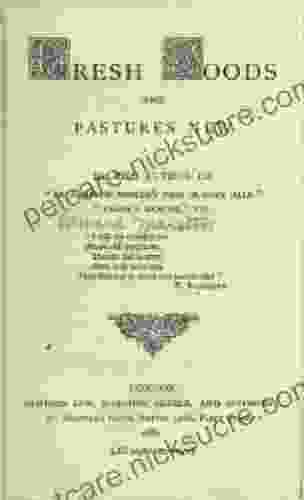
 Ryūnosuke AkutagawaFresh Woods and Pastures New: A Journey of Self-Discovery and Social...
Ryūnosuke AkutagawaFresh Woods and Pastures New: A Journey of Self-Discovery and Social...
 Howard BlairCommon Mistakes in Meta-Analysis and How to Avoid Them: A Comprehensive Guide
Howard BlairCommon Mistakes in Meta-Analysis and How to Avoid Them: A Comprehensive Guide
 Cristian CoxThe Meltdown Crisis and Nuclear Power in American Popular Culture: A Critical...
Cristian CoxThe Meltdown Crisis and Nuclear Power in American Popular Culture: A Critical... Terry PratchettFollow ·11.4k
Terry PratchettFollow ·11.4k Victor TurnerFollow ·11.4k
Victor TurnerFollow ·11.4k Terry BellFollow ·6.6k
Terry BellFollow ·6.6k Branson CarterFollow ·4.5k
Branson CarterFollow ·4.5k Hassan CoxFollow ·15k
Hassan CoxFollow ·15k Bernard PowellFollow ·19.4k
Bernard PowellFollow ·19.4k Hank MitchellFollow ·6.4k
Hank MitchellFollow ·6.4k E.E. CummingsFollow ·12.6k
E.E. CummingsFollow ·12.6k
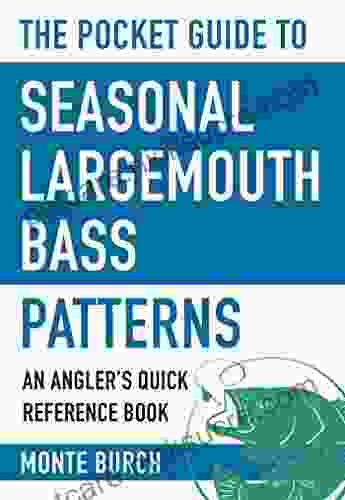
 Marcus Bell
Marcus BellThe Essential Guide to Angler Quick Reference: Your...
Embark on an unforgettable...
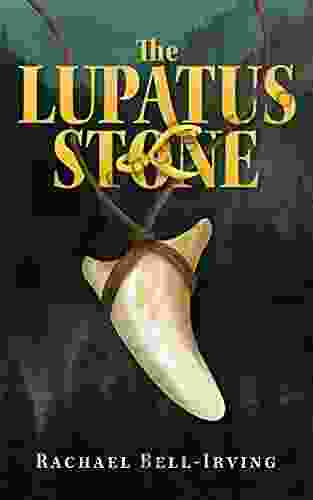
 Juan Butler
Juan ButlerThe Lupatus Stone: A Wicked Conjuring
The Lupatus Stone is a...

 Alvin Bell
Alvin BellUnveiling the Enchanting Memoirs of Lady Hyegyong: A...
In the annals of Korean...

 DeShawn Powell
DeShawn PowellAMC's Best Day Hikes in the Berkshires: Explore Majestic...
The Berkshires, a...

 Clark Campbell
Clark CampbellRewilding The Urban Soul: Reconnecting with Nature in the...
In the heart of sprawling metropolises, where...
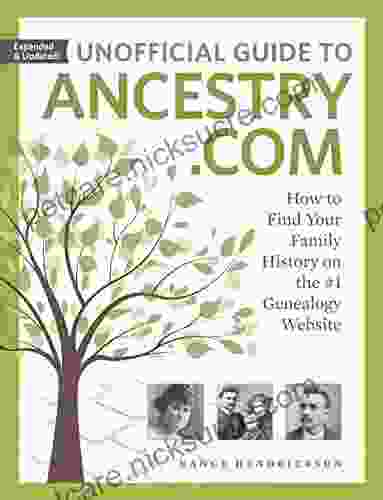
 Cruz Simmons
Cruz SimmonsHow to Find Your Family History on a Genealogy Website: A...
Delving into the...
5 out of 5
| Language | : | English |
| File size | : | 6766 KB |
| Text-to-Speech | : | Enabled |
| Screen Reader | : | Supported |
| Enhanced typesetting | : | Enabled |
| Print length | : | 179 pages |


